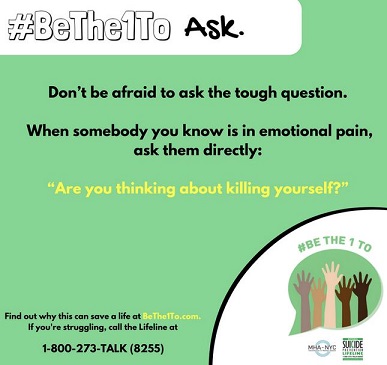 Suicide is a problem that touches the lives of many Americans.
Suicide is a problem that touches the lives of many Americans.
According to dhs.gov, over the past two decades, suicide rates have risen in the United States, and suicide is currently ranked 10th for cause of death among all ages.
The National Suicide Prevention Lifeline proclaims particular steps that can be utilized to prevent suicide.
• Ask
Research shows that people who are having thoughts of suicide feel relief when someone asks after them in a caring way. Findings suggest acknowledging and talking about suicide may reduce suicidal thoughts.
• Be There
Individuals are more likely to feel less depressed, less suicidal, less overwhelmed, and more hopeful after speaking to someone who listens without judgment.
• Keep Them Safe
A number of studies have indicated that when lethal means are made less available or less deadly, suicide rates by that method decline, and frequently suicide rates overall decline.
• Help Them Stay Connected
Studies indicate that helping someone at risk create a network of resources and individuals for support and safety can help them take positive action and reduce feelings of hopelessness.
• Follow Up
Studies have also shown that brief, low-cost intervention and supportive, ongoing contact may be an important part of suicide prevention, especially for individuals after they have been discharged from hospitals or care services.
Suicide is preventable. Commitment and engagement in communities, workplaces, and homes can help reduce the number of suicides.
What resources are available for someone who is suicidal or in need of help?
- Call 1-800-273-8255 to reach the National Suicide Prevention Lifeline 24 hours a day, 7 days a week, and follow their guidance. You can also visit their website for further information.
- Take the person to the nearest Emergency Room, where they will receive a full suicide assessment and receive needed care. If the person is hesitant to receive emergency healthcare, call 911.
- If the person you know has a mental health professional that they see, help them schedule an urgent appointment. If they do not have an existing connection with a mental health professional, help them make an urgent appointment with their family physician.
For more information on suicide prevention, visit the National Suicide Prevention Lifeline.



